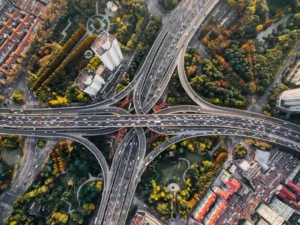Strategic Whiplash

India is in a state of disbelief as President Donald Trump has imposed a 25 percent additional tariff on Indian goods for its continued purchases of Russian oil, on top of the 25 percent tariff announced earlier. The tariff imposed on India is significantly higher than those levied on many of India’s competitors. Indian experts had not anticipated such high tariffs, which, if implemented, would result in a strong headwind to India’s GDP growth. After over two decades of courting by the successive US administrations, which saw the emergence of India as a key ally in the Indo-Pacific, this announcement by President Trump has delivered a strategic whiplash to India. New Delhi is now scrambling to assess whether this is merely a negotiating ploy by the Trump administration or a shift in US policy. The former Indian Foreign Secretary Shyam Saran, writing in the Indian Express, states that President Trump “was supposed to be good for India…. has turned out to be a nightmare.”
Over the years, India has secured lucrative defence and technology deals with the US, including the new defence framework, the civil nuclear deal, agreement on cybersecurity, strategic dialogue, two-plus-two, I2U2, QUAD, intelligence sharing, initiative on critical and emerging technologies, and semiconductor partnership, to name a few. In the current fiscal year, the US is India’s largest trading partner, with bilateral trade reaching around $186 billion and India enjoying a trade surplus of over $45 billion. Strategic partnership with the US notwithstanding, India has been steadily increasing its oil purchases from Russia from a mere 0.2 % before the Russia-Ukraine war to currently 40% of its total crude oil imports. India has also made money by refining this crude oil and exporting it to third countries. The bulk of its military purchases come from Russia. India has never condemned Russia for its invasion of Ukraine. India’s membership of BRICS continues to irk President Trump.
Prime Minister Narendra Modi has delusions about India becoming a great power, despite worsening domestic and geopolitical fault lines. Despite much-touted economic growth, nearly 60% of India’s population of around 1.4 billion lives below the World Bank’s median poverty line of $3.10 per day. Over 250 million people subsist on less than $2 a day. India ranks 143rd out of 194 countries in terms of per capita GDP. The country faces mounting internal challenges, including rising majoritarianism, weakening democratic norms, widening socio-economic disparities, administrative inefficiencies, and serious insurgencies. Externally, Foreign Minister Jaishankar’s mantra of “strategic autonomy” often translates into hesitant diplomacy, frustrating key allies, especially the US. Militarily, India was exposed during the May 2025 four-day conflict with Pakistan. While aspirations for regional dominance and global influence persist, the gap between ambition and execution grows wider.
As India wrestles with the unpredictability of President Trump’s foreign and trade policies amid a shifting global order, it finds itself at a crossroads. As Raja Mohan, an eminent Indian analyst, recently wrote, “the notion that India can navigate between great power rivalries freely and without cost has come under close scrutiny”. India built its strategic partnership with the US, leveraging the latter’s concerns to contain China. This relationship flourished over two decades. However, President Trump’s recent statements about India have caused diplomatic tremors, unsettling India. As if President Trump has called India’s bluff. Indian leadership has failed to reconcile with President Trump’s repeated claims of brokering a ceasefire between India and Pakistan. His repeated references to Kashmir have silenced the Indian leadership. Shashi Tharoor, an Indian politician, in a recent article, asserts that India faces the stark choices: whether to lean further into a volatile US-led strategic camp or to double down on its cherished doctrine of strategic autonomy.
So far, Prime Minister Modi has struck a defiant note on the purchase of Russian oil. India has called President Trump’s imposition of 25 percent additional tariff over its purchase of oil from Russia “unjustified and unreasonable”. An official statement asserts, “Like any major economy, India will take all necessary measures to safeguard its national interests and economic security.”
While India is likely to make pragmatic readjustments in its foreign relations, a fundamental shift appears unlikely. India will, in all likelihood, continue to seek close strategic ties with the US, but will not abandon its close partnership with Russia, especially in the realm of defence. Having substantial economic relations with China, India may not risk an overt rupture with it either. In the framework of BRICS and SCO, India may be cautious not to be part of any initiative perceived as anti-US. To satisfy the US, it may recalibrate its policies, albeit marginally. In other words, it will be a tight rope walk for India, especially under the Trump era. However, the honeymoon period of the US-India partnership appears to be over. India may face a dilution of its strategic ties with the US and an economic slowdown because of the new conditionalities.


